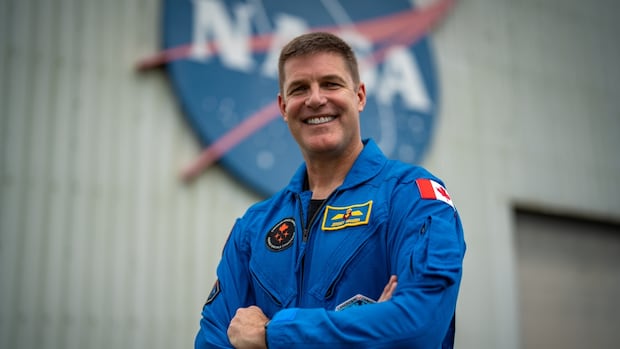If all goes to plan, next February could see the return of humans to the moon. Four people — NASA astronauts Victor Glover, Reid Wiseman, Christina Koch and Canadian Space Agency astronaut Jeremy Hansen — will see it as no one has before. Not even the Apollo astronauts, as much of it was dark during their missions.
Artemis II is a mission to send the four around the moon, taking them farther than any human has ever been. Their goal is to help prepare for Artemis III, which will see boots on the moon for the first time since 1972.
While they are tasked with testing out the spacecraft’s many systems and abilities, the four are also very much human guinea pigs in space.
During the Apollo missions of the 1960s and ’70s, NASA collected rock samples from the moon and conducted experiments on its surface, but one thing it didn’t do is learn more about how the human body reacts to deep space.
Artemis is looking to change that.
“Our top priority is to bring our friends safely home,” said Jacob Bleacher, NASA chief exploration scientist, at a press conference last week.
“To do that, we have developed an integrated research campaign that will support all of our future Artemis missions to make sure that we can travel safely in space and bring everybody home. And that really starts with trying to understand the space environment.”
Human bodies weren’t meant for space travel. We have evolved to live on Earth, protected by our magnetosphere against harmful radiation and cosmic rays and more. But if we are going to venture out into space and look to live on the moon or Mars, we need to know how we can better protect ourselves.
AVATAR (no, not the movie)
A few of the experiments have already begun.
ARCHeR, or Artemis Research for Crew Health & Readiness, is one of them.
In this experiment, astronauts wear a watch-like device that monitors their sleep, stress and cognition ahead of the launch, during the mission and once they return.
“We are the biggest experiment flying, the individual,” Hansen told CBC News. “We’re spending quite a bit of time now collecting data on our bodies…. But a lot of the science is sort of being done behind the scenes for us. We are the experiment.”
The findings will help plan for future missions and crew support.

Then there’s AVATAR, or A Virtual Astronaut Tissue Analog Response (NASA loves its acronyms).
NASA wants to understand how deep space affects the human bodies, specifically extreme radiation and microgravity, but it’s difficult to poke and prod astronauts in a small environment. Instead, they have developed AVATAR, which acts, well, like an avatar for these individuals.
Blood cells were collected here on for all four astronauts, then put on a chip roughly the size of a USB thumb drive. The collection acts as a stand-in for their bone marrow, which plays a vital role in our immune systems. It’s also sensitive to radiation.
“Once we understand what’s happening in deep space, especially in the radiation environment — I have a radiation background — so it’s really important to me and to the agency in understanding how we can protect our astronauts so that we can send them out on these deep space exploration exploration missions and make sure that they return healthy,” Lisa Carnell, director of NASA’s biological and physical sciences division, told CBC News.

Being armed with this information, Carnell said, could help provide personal countermeasures to protect future astronauts going on deep-space missions. But she also noted that they could use this information for similar countermeasures here on Earth.
Lick here, please
We may not think much about our saliva, but it’s “basically a window into how our immune system is functioning,” Bleacher said.
The Artemis II astronauts have already provided NASA with samples, but once they’re in space, they will collect “dry” saliva samples, meaning they’ll lick special paper in pocket-sized booklets that will return to Earth for further study.

The purpose? To analyze how the astronauts’ immune systems, including hormones, viruses and cells respond to things like radiation and isolation. They will also see whether or not dormant viruses are reactivated in deep space. In 2024, a study was released on an astronaut on the International Space Station who had the herpes zoster virus that causes shingles.
“This research provides insight into how a person’s immune system will be affected during these deep space missions that will be flying in the future,” Bleacher said.
While it may not be as glamorous as walking on the moon, like the Artemis III mission will be, Artemis II is laying the groundwork to long-term human presence in space, even if it takes decades.
“When I look at the future, when we talk about what is our legacy, I don’t want to look five years or 10 years in the future. I want to look 100 or 200 years in the future. And honestly, this is where I thought this might land wrong: I hope we’re forgotten,” Wiseman said at a NASA press conference last week.
“If we are forgotten, then Artemis has been successful. We have humans on Mars. We have humans out on the moons of Saturn. We are expanding in the solar system.
“And maybe that’s our footnote: We inspired Susie or Johnny to do what they did. That would be magical.”







